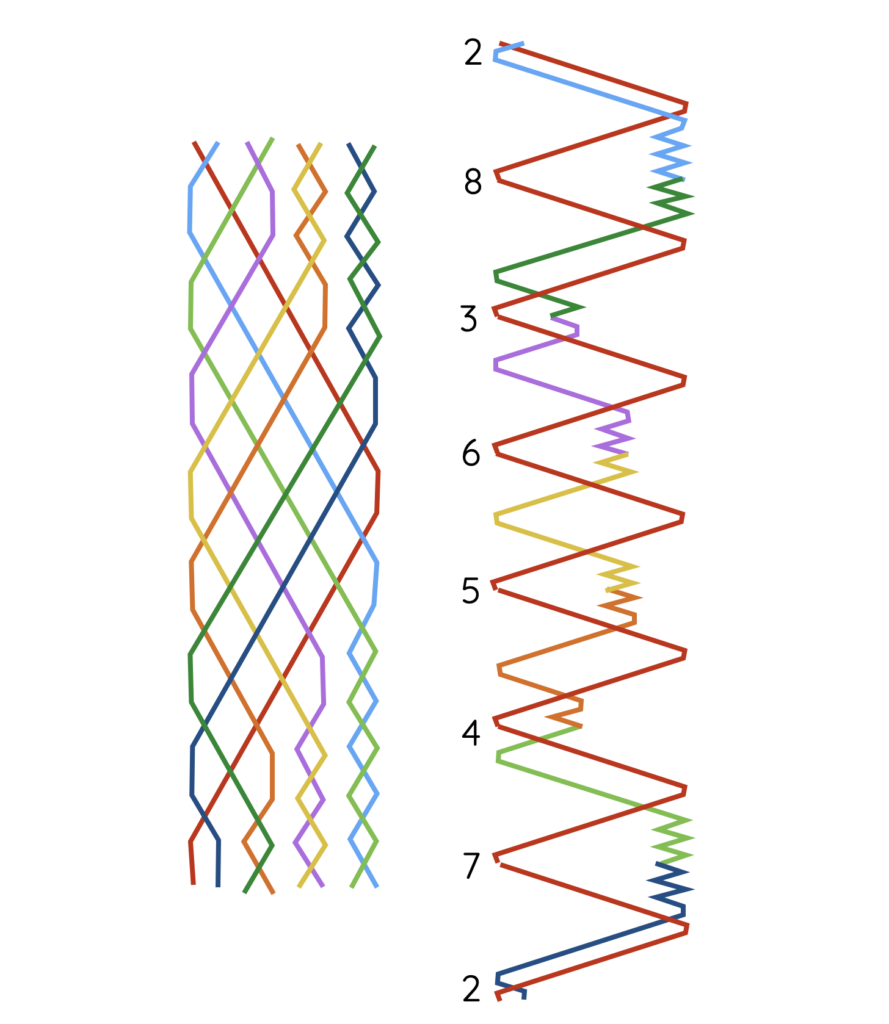Single Oxford Bob
Quick and easy to learn. Single Oxford Bob is a fun method to try for those moving on from Plain Bob.
Single Oxford Bob is a relatively simple method which is a fusion of 2 basic elements… triple dodges at the back, much like sister method Double Oxford, but Plain Bob Minimus at the front.
It can be rung by observing the treble as it follows Bob Minimus rules absolutely.
The Dodges at the back are also started and finishes by the arrival or departure of the treble.
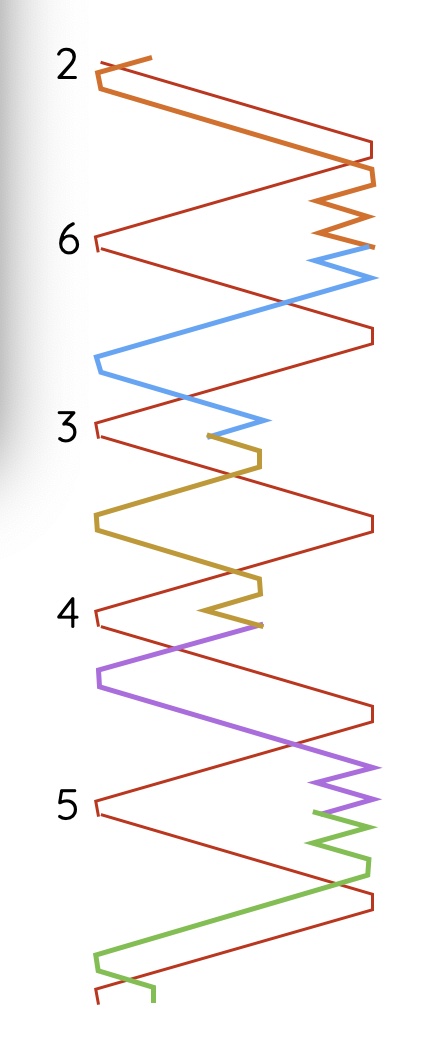
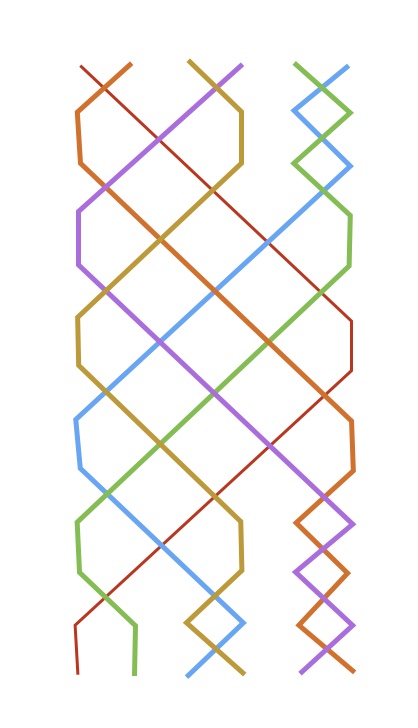
The Line
The place bell order is 2 6 3 4 5… so the same a Cambridge.
Place bells remain an important element of learning the line… without knowing them individually, as well as in order, you will not know the starts and will come horribly unstuck at a bob, single or splice.
The key to ringing Single Oxford Bob is the treble….
Pass it in 1-2 you make 2nds… just like Plain Bob.
Pass it in 2-3 or 3-4. you will ring Plain Bob Minimus and dodge 3-4 up or 3-4 down.
Pass it in 4-5 or 5-6 and you will dodge at the back until the treble returns to receive you.
Because the treble relieves both back bells, there will be a fresh pair of bells after the treble turns.
The Treble
The treble hunts and even though this method is more complex, the bells are the same going up and down, making it ideal for a learner.
Unlike Plain Bob, the coursing order does not match the place bell order….
The pattern for how the order changes from one lead to the next is also more complex, so it will be very difficult to ring without rope sight… which makes it ideal to stretch those that might be relying on numbers too much!
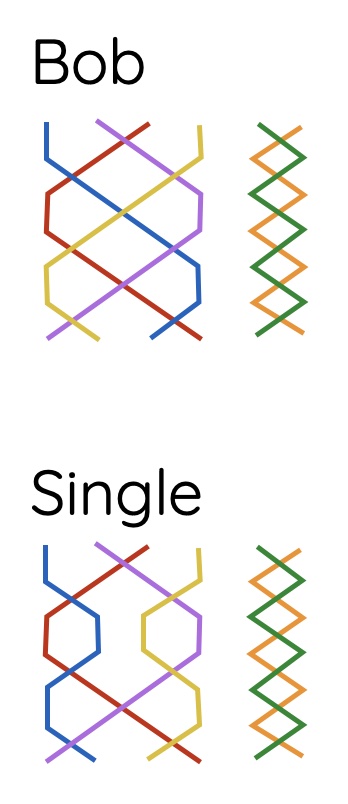
Bobs and Singles
Bobs are 14 (4th place), so the same as Plain Bob.
-
If you are passing the treble in 2-3, make 4ths and become 4th place bell.
-
If you are leading, run out and become 3rds place bell…. (so turn around in 4ths….)
-
If you are making 4ths… run in and become 2nds place bells.
- The bells beyond 4th place are unaffected…
The single is a standard 1234 single, so also the same Plain Bob.
-
If you are passing the treble in 2-3, make 4ths and become 4th place bell.
-
It you are making 4ths when the call is made (3rds place bell), then make thirds (the single) and repeat thirds place bells… so 4ths and in… effectively a crankshaft figure!
-
If you are making seconds, or beyond 4ths place, you will be unaffected.
Practice Touches
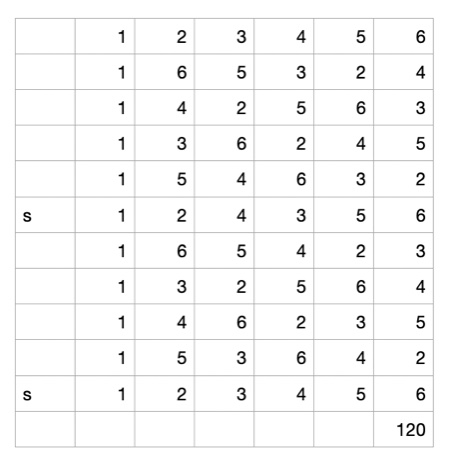
Two singles a course apart is probably the simplest calling and an ‘old chestnut’ which works with most methods. Two singles will always double the length of a touch if the second is placed at the same point on the repeat.
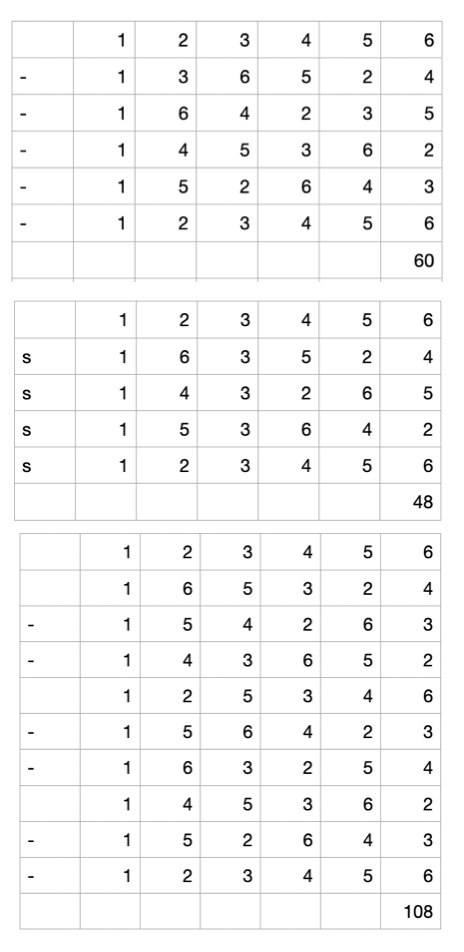
For simple practice, a bob course is 5 leads and all working bells do all the work, so it is an ideal way for everyone to get familiar with the calls.
A course of singles is only 4 leads and has very little value as the 3rd repeatedly makes the single.
Alternate leads with Bobs will provide 120 changes and BBPx3 will provide 108 changes.
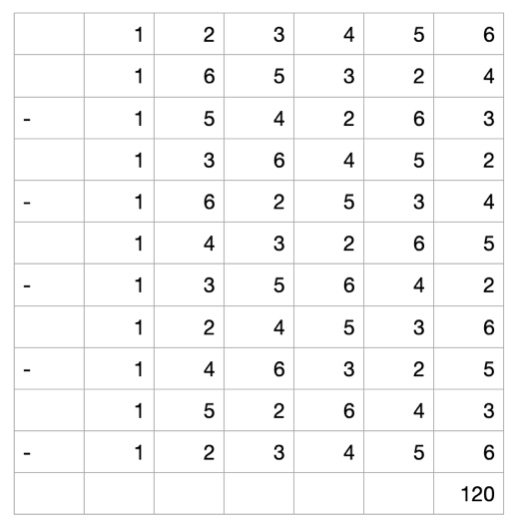
False but Fun!
IThe touches below, use singles to swap pairs of bells with result the they come around at hand stroke… so they are definitely false. But they make for a fun touch at a practice, because no one is expecting them to come around!
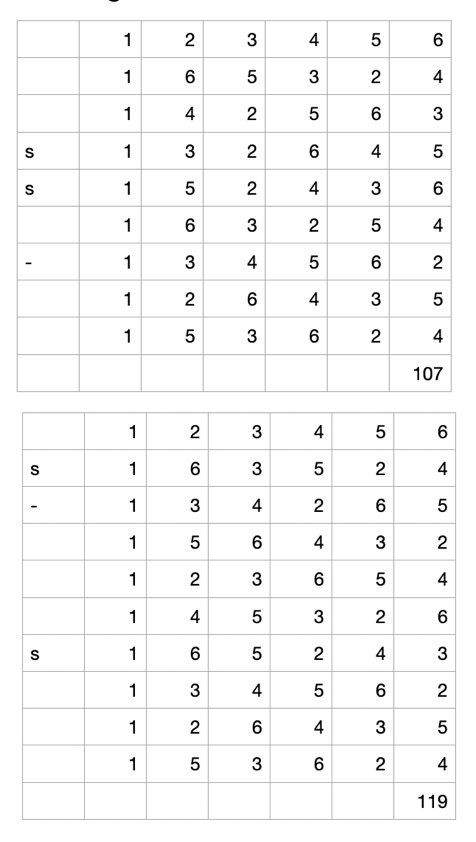
Longer Lengths
The Left touch is the standard WHW, providing 3 x 120 changes…. if you add single at the end, it will then double to a full 720.
The righthand touch is another common calling… 4 singles all called at the ‘wrong’ position, with a bob at the final ‘home’ position. Each part is 240 changes long, so it too runs to a full 720.

Changing Places...
Triples
- By adding a second hunt bell – as per Grandsire we can extend to 7 bells and provide an odd bell variation. However, like Grandsire the single dodges move to the beginning of the new lead-end, it will require the use of Grandsire type calls and create complexities for touch composition.
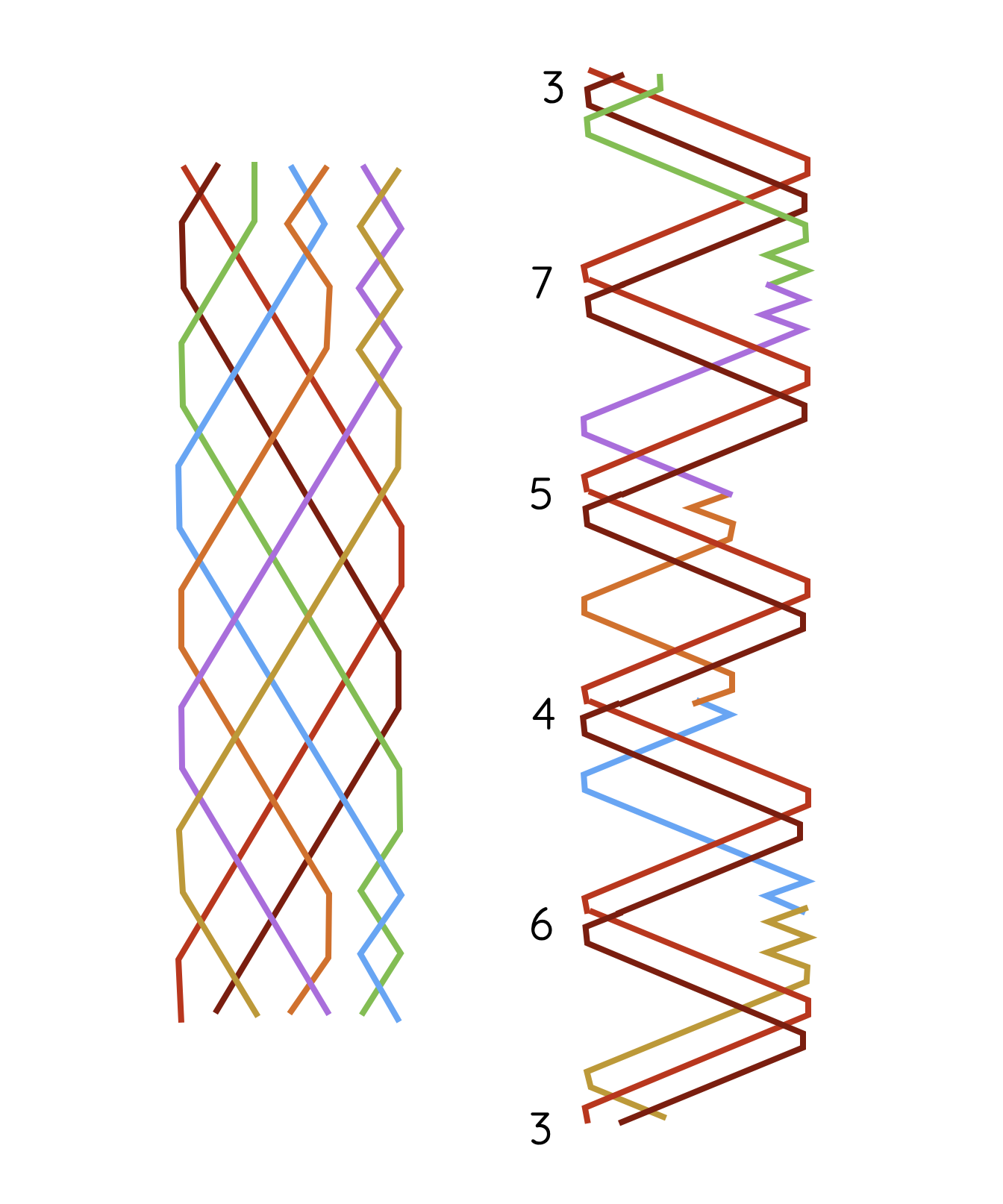
Major
- It can also be extended (in a more logical way) to major with the addition of quintuple dodges in 7-8 which occur behind the 5-6 triples… and this could presumably be extended to Royal by adding Septuple dodges in 9-10 although that may be a step too far for most!
